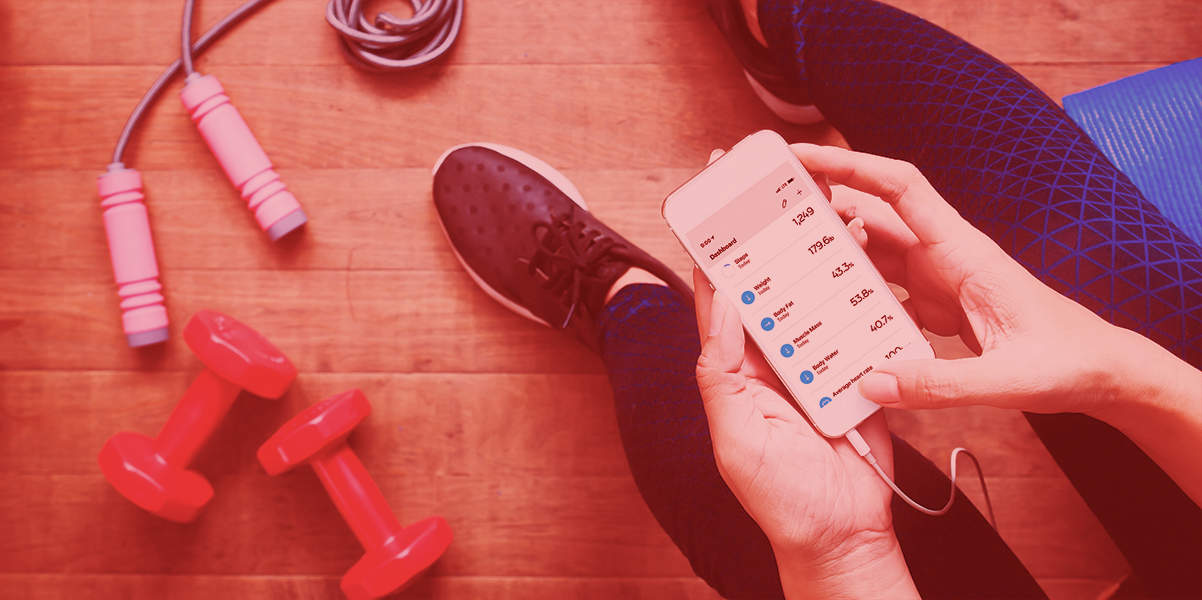Table of Contents
We do lots of planning, tracking, and analyzing data for the office because what gets measured gets managed (and improved). So why aren’t we setting goals for our personal lives too?
I won’t lie. I’ve developed some pretty bad habits over the years, like overindulging in sweets and not exercising or sleeping much, to name a few.
All the above, combined with the fact that I’m not 20 anymore, obviously made for the perfect weight gain storm. (Sigh.)
It felt like it happened overnight, but of course, it didn’t. My small but horrible behaviors (e.g. eating chocolate croissants instead of oatmeal for breakfast), day after day, snowballed into a major problem (gaining a nice chunk of weight).
I felt my clothes becoming increasingly snug, but I wasn’t weighing myself, so it was really easy to be willfully blind because I wasn’t quantifying the problem.

Had I been more self-aware (and accountable to myself), I wouldn’t be overweight.
“We don’t notice tiny changes because their immediate impact is negligible… But if we repeat small behaviors day after day, our choices compound into major results. Eat pizza every day, and it’s likely you will have gained considerable weight after a year. Go jogging for 20 minutes every day, and you’ll eventually be leaner and fitter, even though you won’t have noticed the change happening.”
—James Clear, Atomic Habits
If I had been tracking my weight all along, I would have quickly noticed a depressing upward trendline early on, before I embedded these bad habits into my everyday life.
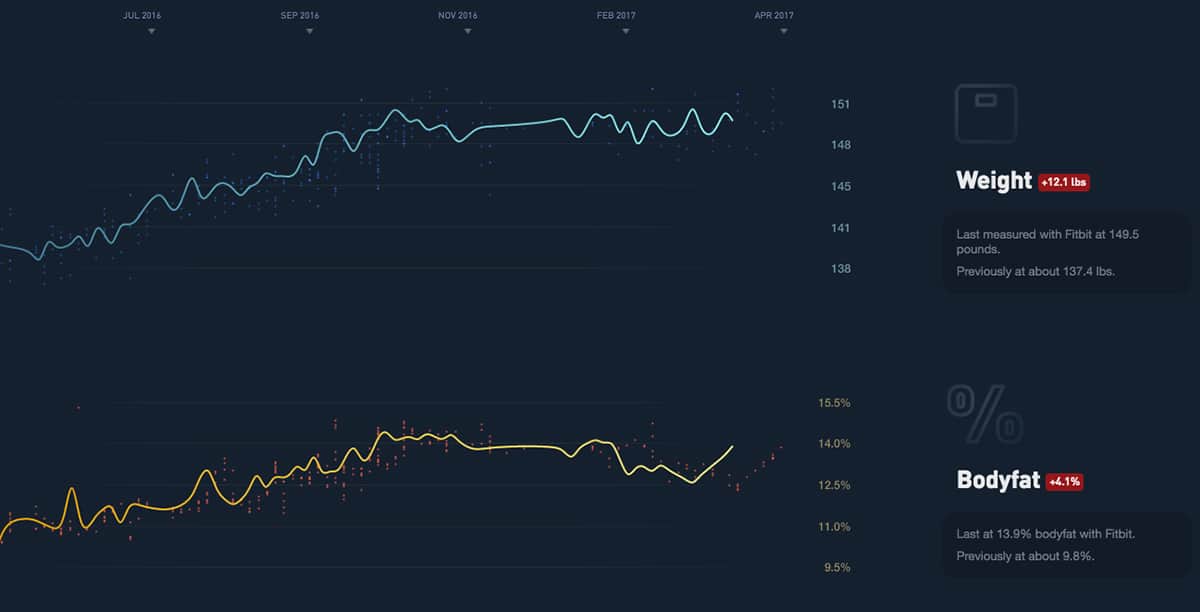
I know this is true because, nine years later (exaggerating), I’ve purchased a scale and a corresponding app to go with it, and now I weigh myself daily, and track my progress.
Since I started doing this, somewhere between one and two months ago, I’ve dropped 17 lbs (3 lbs/week), which has motivated the hell out of me.

People who track their goals—whether it’s the number of steps they take a day, the quality of their sleep, or what they eat at each meal—are more successful at reaching their health and fitness goals than those who don’t. Don’t just take it from me—a study from the American Psychological Association backs it up.
Tracking works because it makes you self-aware and therefore, accountable. By providing feedback and “nudges,” tracking helps you literally see your good and bad habits.
And “once you know the facts, you can live by them.”
Whether you want to shed some pounds, be more productive, quit smoking, save money, develop a new skill, or do whatever else your little heart desires, this post is for you.
In it, you’ll learn everything you need to know to improve any aspect of your life simply by tracking it.

These are in no particular order, as everyone has different challenges and situations and therefore, different priorities, so feel free to skip to the section that’s most relevant to you:
Tracking your productivity and work
Apps for tracking your health

Track your sleep
I started tracking my sleep after reading the book “Why We Sleep,” which pretty much scared the hell out of me because I was a total insomniac for a long time.
Not sleeping enough adversely affects our mental and physical health—if you aren’t getting enough rest, nearly every other aspect of your life (from your focus to your relationships) will suffer.
Not sure how much sleep you should be getting? Here’s a chart that spells it out:

Tracking your sleep will help, but if you are struggling to get enough rest, I highly recommend checking out this guide:
There are a variety of products that track sleep, but some are more accurate than others. Here are the ones I’ve tried:
AutoSleep
After a lot of Googling, I purchased the AutoSleep app ($4.99 | iPhone and Apple Watch) because:
- It *automatically* tracks your sleep.
- It’s supposedly one of the most accurate apps on the market.
- I have the Apple Watch and iPhone.
- It’s extremely affordable.
- It’s No. 1 in Apple’s Health & Fitness category.
AutoSleep tracks your sleep in one of two ways.
The first (and best) option is to wear your watch to bed.
If you DO wear your Apple Watch to bed, you don’t have to worry about anything but falling asleep. The app will automagically track both the quality and the length of your sleep.
If you don’t wear your watch to bed, simply put your watch on its charger before you go to sleep. In the morning, when you wake up, put your watch back on, or touch your iPhone when you wake up, then put on your watch within 30 minutes. Once you put your watch back on, you’ll see the metrics start to populate shortly thereafter.
SleepCycle
If you don’t own a smartwatch or aren’t an Apple user, then I recommend the SleepCycle app, which is available in the Google Play Store as well as the App Store.
The free version gives you plenty of data analysis around your sleep, and integrates with health apps that may already be on your device. You can also choose from a variety of alarm melodies designed to wake you up easily, and you can snooze the alarm simply by shaking or double tapping your phone.
If you want to go premium, you’ll be able to customize a “wake-up window” that will be less disruptive to your sleep patterns, and you can even capture audio of yourself snoring or talking in your sleep (if you really want to).
Track your posture
As someone who spends a ton of time at their desk and on the computer, I’m very aware of how much I slouch. I used to cringe thinking about what my spine might look like by the time I’m 80!
What I wasn’t very sure of was how to solve the problem… until this perfectly targeted Instagram ad for a product called Upright, popped up on my feed.
The company sells a range of products all designed to remind you to sit up straight (keeping back problems at bay). Their signature item is a small, rectangular device that you can stick to your back with adhesive or wear as a necklace.
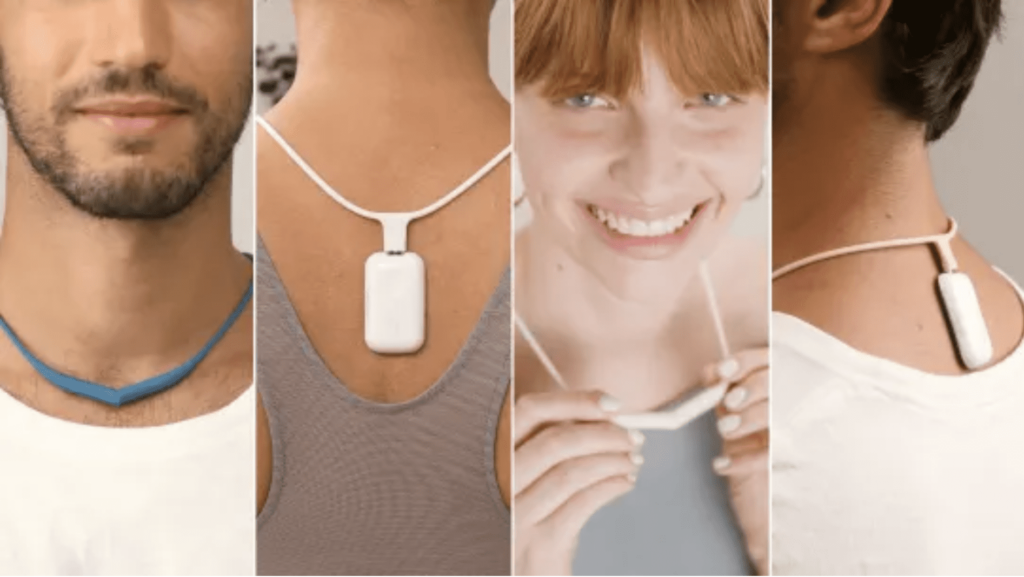
The rectangular item vibrates every time you slouch, and the data syncs with its app to show you how often you’re slouching.

Getting started with Upright is super self-explanatory, as their onboarding is pretty legit, so I won’t dive into how to get set up. I bought one for my mom, and if she can figure it out on her own, so can you. 😉
Track your weight
I wish—SO MUCH—that I had been tracking my weight for the last few years because I wouldn’t be where I am right now if I had been.
Tracking my weight is literally changing my life. It’s probably the biggest motivating factor behind why I’ve traded in my unhealthy habits for a more healthy lifestyle.
After thorough research, I purchased the Withings Body+ scale, and I’m more than happy with it.

Withings offers three different scales, but I went with the Body+ because I thought it gave me the most bang for my buck. At $99.95, it has been well worth the investment, because it’s so much more than just a scale.
The Withings Body+ connects to WiFi and comes with an app (iPhone and Android versions) that automagically syncs with your scale, so you can visualize your metrics over time. This has been invaluable!
Health Mate (the app) tracks:
- Weight
- Body Mass Index (BMI)
- Body Fat %
- Total Body Water %
- Muscle Mass (kg or lb)
- Bone Mass (kg or lb)

I like to review all of the above, but in particular: weight, BMI, body fat, and muscle mass.
The Health Mate app also has a great onboarding process, so it’s more than easy to set up. And I love how it explains what everything means in an easy-to-digest way with its in-app content. It also tells you what healthy ranges are for each metric based on your weight, height, and age.

Track your water intake
Sometimes, when I’m feeling frustrated, irritable, or tired, I’ll realize it’s all down to one thing: I haven’t had enough water. After drinking a few glasses, it’s like magic—my mood improves, and my whole body feels better and more energized.
Water helps you regulate your body temperature, normalize your blood pressure, keep your digestive system working, and can even help prevent bad breath. So it’s clear, drinking enough of the elixir of life is important.
But remembering to drink water throughout each day is a challenge. Which is why I purchased a Hidrate Spark, a smart water bottle that syncs with an app, other fitness trackers, and uses a light to notify you throughout the day when you need to drink.

There is no single precise amount of water you should drink every day—it depends on how active you are, what climate you’re in, and your body type overall.
In other words, we all have our own hydration needs, and the clever app that comes with the HidrateSpark takes this into account. It syncs with the other health apps on your mobile device or smart watch, and uses your daily activity amounts to determine how much you need to drink.
When it’s time for you to hydrate, the water bottle lets off this seriously cool glow that makes it actually kind of exciting to drink water. Genius.

Track your food
How conscious are you about the foods you’re consuming every day? Are you a meticulous meal planner, or are you more the type to scrounge up a meal whenever hunger strikes?
Either way, you might learn something by keeping a food journal—and there are so many apps that help you track food.
MyFitnessPal
MyFitnessPal is by far the most popular food and fitness tracker on the market, and for most people, the free trial version will be enough to get started.
Their enormous database of foods allows you to upload anything you’re eating—by searching, scanning a barcode, or even taking a picture of the food—and it will keep track of the nutrients and calories you’re consuming each day.
The paid version of the app also gives you access to a number of healthy recipes as well as follow-along workout videos to keep your fitness on track.

Fooducate
If you want a food tracker that also teaches you about healthy eating and food quality, then Fooducate is the app for you.
The app not only keeps track of calories, macros, and nutrients, but it gives you ingredient-level breakdowns of how healthy your food is, and even helps you find healthier alternatives to add to your plate.

Track your movement

I started tracking my movement when I bought an Apple Watch, because it automatically tracks three key activities daily:
- How many calories you burn in a day
- How many times you stand per hour
- How many minutes you exercised that day
While I went with the Apple Watch, you could track all these metrics with a FitBit or a Garmin or Withings fitness band. I’ve read that FitBit’s data is the most accurate. Could be fake news, though. 😉
Steps
An easy way to get started with exercise is by simply moving more, hence the reason I’m suggesting tracking your steps.
The average American walks 3,000 to 4,000 steps a day, or roughly 1.5 to two miles. While any movement is good, that’s simply not enough steps daily for most healthy adults—we should be walking closer to 10,000 steps a day.
Fortunately, most smart phones in the last year have automatic step trackers built-in, and if you’re a smartwatch owner, you’ll most likely be able to monitor and receive reports on your daily steps.
If you’re looking for a way to compare your daily steps to an activity level, consider the following categories:

If you start tracking your steps now, you can figure out how many you’re taking on average and use a tracker to set new goals and start getting your steps up. Even simple activities, like cleaning your house or going shopping, can keep you moving and improve your health—but you’ll never know if you don’t start tracking.
Workouts
I also use my Watch’s Activity tracker to track my workouts.
All I have to do is go to the app on my watch, choose the type of workout I’m about to start, and then click record.

Until I end my workout, it shows me how long I exercised, my current heart rate, as well as calories I burned. It’s good to know your target heart rate based on your fitness goals, and then make sure you’re reaching it for some period of time during every workout.
The food tracking apps mentioned above can also track your calories burned, so you can use it to calculate how many calories you should eat to feel your best and achieve your health goals.
Heart Rate Variability (HRV)
Determine whether it’s time to exercise or rest.
I never understood the point of HRV, until I downloaded the Gyroscope app. (More on this amazing app later in this article.)
Heart rate variability, or HRV, is a new metric that reveals your stress level and whether you have recovered from your last workout. It’s been added to a lot of watches recently including Apple Watch since watch OS 4 & iOS 11.
HRV tells you how stressed your body is. It sounds weird, but the higher your HRV, the lower your stress levels.
A wide array of things can cause your body “stress.” And not all stress is bad. While external factors—like work, anxiety, and relationships—can cause stress, you’re also putting your body through stress when you’re exercising (which is a good thing).
When you begin tracking your HRV, you’ll first get a look at your average HRV when you’re at rest. Then, when your HRV drops (indicating stress), you can make decisions on what to do.
Low HRV because you’re still recovering from yesterday’s workout? Perhaps today’s workout should just be a stretching and meditation session.
High, stagnant HRV because you’ve been sitting at your desk all day? Maybe it’s time to stand up and move around a bit.
Low HRV can also indicate that you may be feeling stress and anxiety from something else—perhaps you’re not feeling well, or you’ve just had a difficult conversation. Monitoring your HRV can help you decide when it’s time to rest and recenter yourself.
Track your happiness/moods
Many of the apps I mention in this post allow you to track your moods throughout the day.
But if you ask me, Exist is by far the best mood tracker app (for Android and iOS).
Each day, Exist sends you a reminder to review your mood. It takes two seconds. You simply pick on a scale from 1 – 5 rating how your day was, and record a short note.
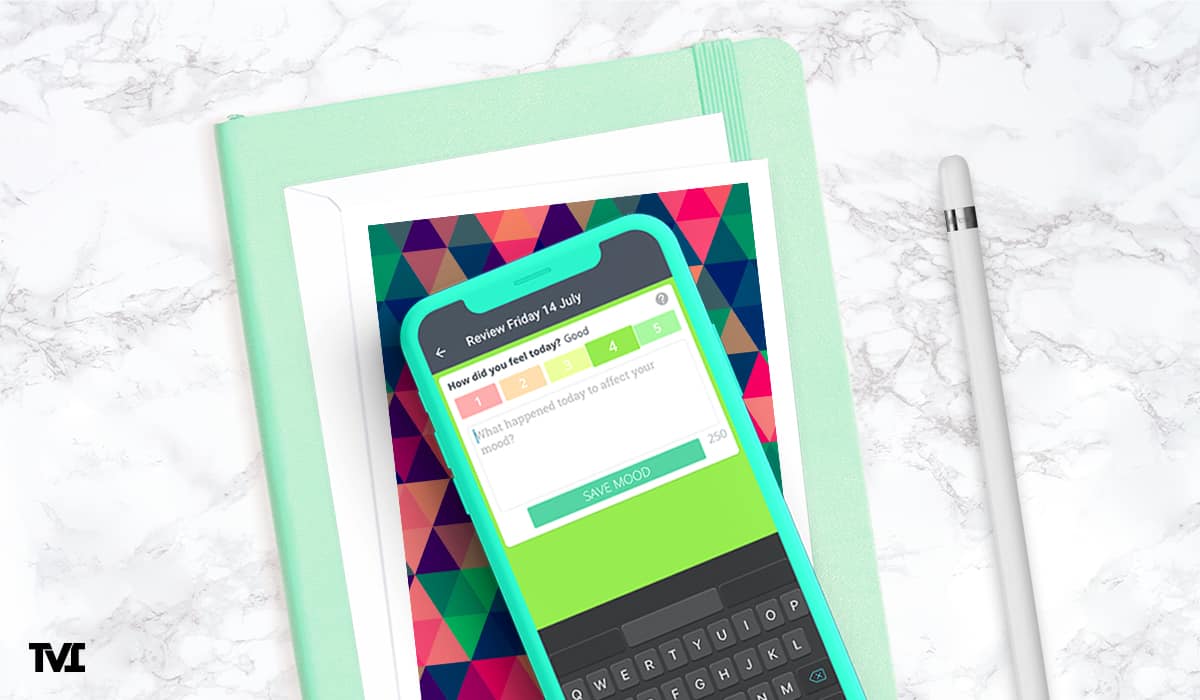
In addition to your mood, Exist tracks a lot of the other stuff mentioned in this article—your steps, your productivity, your sleep, your weight—and it combines all of that to give you some seriously helpful data about your overall well being.


Something I love about this app is that you can create your own tags to start tracking tasks you aren’t tracking anywhere else.
How often do you meditate? Did you brush your teeth twice a day? How many hours did you practice piano? How many pages of a novel did you read?
You can track all of this with unique tags, and see how these different activities impact your mood over time.
Exist costs $6/month or $57/year.
This might sound really old-school, but a soft-cover Moleskine and a good pen can be a phenomenal mood tracker tool as well. #SuccessfulPeopleJournal
Tracking your productivity and work

What times of day are you most productive? When do you fall prey to time-wasters and procrastination? When does your brain need a break from all that work? And most importantly: How do you get more time in your day to do whatever the heck you want?
The answer is tracking your productivity and improving your time management strategies. I’ve recommended some of my favorite apps for tracking productivity below, but be sure to read our full guide on getting time back in your life here:

Track your screen time
Personal Screen Time
A few years ago, Apple released the “Screen Time” feature on its devices to show you how much time you’re spending on them.
It looks like this:

If you work on the computer, I recommend tracking your work and personal screen time separately because it’s easier to see how you’re splitting your time.
For instance, I spend significantly less time on my phone (personal) than I do on my computers (work), so I focus more on tracking the latter than the former.
You can also use this feature to set time limits on certain apps. For example, if you find yourself scrolling through TikTok when you should be doing classwork, you can set a one-hour limit on the app, and once you hit that limit, you’ll need to enter your passcode to get in. A little barrier like this can stop you from spending mindless time on your phone when you could be doing other, more productive things.
Work Screen Time
I’ve been tracking how much time I spend on the computer for years now.
For 95 percent of that time, I’ve used Timing (Mac app) because it automatically tracks your time and syncs across Apple devices.

While I still use Timing, I also purchased a subscription to RescueTime because it was cheap ($36/year), and it integrated with this app I’ll tell you about soon—Gyroscope, which is like a life dashboard.
When I first installed Timing, I was flabbergasted by how much time I was logging on my Mac. It’s the first thing that really alerted me to the fact that I wasn’t living a healthy or sustainable lifestyle.

Timing hangs out in your Mac’s menu bar (see above), so you’re constantly aware of your screen time.
I find this helpful in triggering me to get off before my productivity score plummets, which for me (and lots of people, I’m guessing) happens toward the end of my workday.
Track your tasks
My first full-time boss was the worst micromanager ever. He made me turn in a sheet that listed everything I’d done for the day, minute-by-minute. Talk about a time-suck.
Eight years ago, I didn’t see the value in doing that. Today, I do.
For one, tracking your daily tasks forces you to get stuff done because you’re acutely aware of your productivity.
More importantly, it helps you keep track of your achievements, so you don’t have to scramble to figure out what you did all year when performance reviews roll around or when you need to build a new resume or update your portfolio.
Option 1: My System

My system is far from perfect or automated, and I tend to change methods/tools every few months. But here’s how I’m finding it easiest to do it right now.
Each night, I take a blank piece of computer paper, and I write down in a schedule format what I must accomplish along with any hard stops (meetings, appointments, etc.) for the next day.
I cross off items as I finish them. On the back of the paper, I jot down any “interruptions,” such as last-minute, higher-priority tasks that my boss asks me to do on the fly.
This way, I know why I didn’t get everything done, and I can clearly articulate the reason to my manager if need be.
If I finish a big project, or if I created any reports on any given day, I save those to my Trello “Achievement” board. (If you aren’t familiar with Trello, it’s an awesome task management tool.) I save absolutely anything that may pose useful career-wise, in the future.
Take screenshots, save spreadsheets and PDFs—anything that will prove you’re an asset to a company/client. You’ll be able to pull for this when you decide to level up your career or update your resume. Here are some other resources to bookmark, if that’s your goal:
Option 2: Task tracker
There are a million and one productivity apps, making it extremely easy to get analysis paralysis.
I’ve tested many different to-do list apps, and Todoist is by far the most addicting.
Todoist is a freemium to-do list app that syncs across all devices and looks like this:

The pro version is only $3 (billed annually) or $4 per month (billed monthly), but you can start out with the free version to see if you like it.

A premium membership allows you to further customize the app (create custom filters, labels, and comments) and see your productivity trends over time.
The most motivating aspect of Todoist is its Karma feature, which gamifies your work.
As you successfully complete tasks on time in Todoist, you’ll gain Karma points and achieve new Karma levels.

You earn Karma when you:
- Add tasks.
- Complete tasks on time.
- Use advanced features like labels, recurring due dates, and reminders.
You earn bonus Karma when you:
- Reach your daily and weekly task goals.
- Achieve new daily and weekly streaks.
You lose Karma when you:
- Have tasks that are 4 or more days overdue.
Todoist also makes pretty, year-in-review reports for its members at the end of every year.
Track your network
Your network is your net worth, so it’s not a bad idea to track your relationships. Of course, this is a more qualitative category, but it’s important nonetheless.
How can you track your network?
Clients
I use Bonsai to track my client relationships.
It’s like an all-in-one dashboard for freelancers, and it makes it easy to track your time and the tasks you have on your plate.

Tracking emails
Emails are the best way to keep track of all your relationships because it’s probably how you communicate with most people outside your company.
There are a few free tools that allow you to see who you talk to the most and who you may want to reach out to with a quick hello, since it’s been a while.

- Email Analytics (Use the free trial)
- Immersion tool
- GTimeReport
- Yesware

Track your Google activity
Most people use Google daily—especially when you consider that Google owns Chrome, YouTube, and Android products.
Did you know that Google makes it easy to see how you’re using its services? The Google My Activity feature will let you see what you’ve searched and looked for in the past, and if you have these settings turned on, what time and where you were when you were searching.
You can use this information to reflect on how often you use Google and its products every day, and factor that into your productivity tracking. Bonus: You can also use this feature to find that funny YouTube video or interesting article you accidentally closed out.
Tracking your finances

Track your money
Budget
I have terrible spending habits, which can make life stressful, especially when you just wing it and hope for the best.
There are lots of budgeting apps out there, like Mint and Learnvest, and those are great for people who love the idea of budgeting. But if you’re like me and just want something simple to see where your money is going every month, I’ve got the solution for you:
Tracking your personal growth

Track your learning
Articles Read
If I could only pick one app to use for the rest of my life, I’m pretty confident it’d be Pocket.
Pocket is a read-it-later app that allows you to save articles across the web. As a writer, I find Pocket invaluable. I come across so many articles and resources in a day that I want to read, and if it weren’t for this app, most of them would slip away as soon as I closed my browser.

Books Read
Books are easier to track than articles, thanks to Goodreads, which integrates with the Kindle store and automatically populates a Facebook-like profile centered around the books you’ve read/are reading.

If you use GoodReads regularly and keep it updated, you can easily see how many books you’re reading each year among other statistics. You can also keep track of books you want to read, explore reviews from other readers, and join communities based on the genres and authors you enjoy most.

Personal Life
Track your music
I don’t track this myself, but you can with Last.fm, which can track what you’re listening to. And combined with Exist, it can even correlate things such as “When you listen to classical music, you’re most productive.”
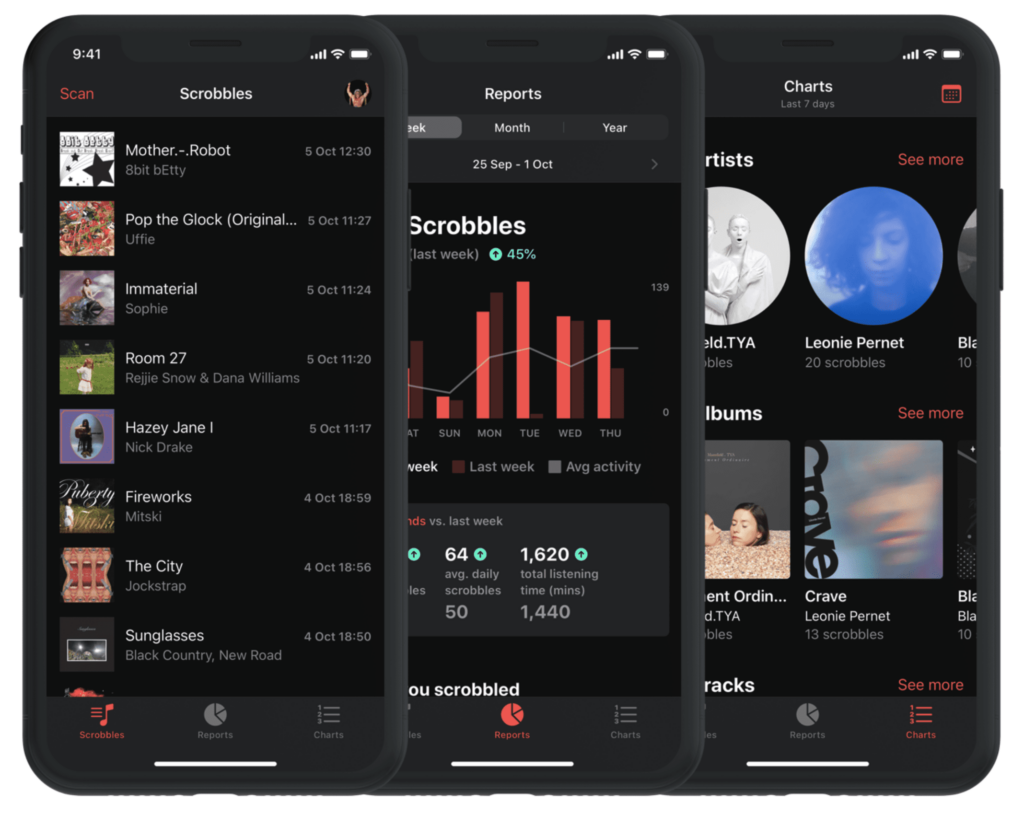
If you use Spotify, you’re probably already familiar with their awesome year-end reviews. These highly-anticipated interactive stories show you your top artists, new genres you discovered, and even make an automatic playlist of your top songs from the year. It’s a great way to track how your music taste evolves over time.

Visualize and analyze your data with a life dashboard app

The best kind of happiness is a habit you’re passionate about.
—Sharon L. Adler
You can’t make yourself feel positive, but you can choose how to act, and if you choose right, it builds your confidence.
—Julian Smith
Gyroscope
I want to dedicate an entire section to this app, because it encompasses and integrates with so many of the others I’ve already listed.
Gyroscope gathers all the personal data I track about my life via my Apple Watch, social media, and location sharing, and presents it into a unified dashboard.
Not only does Gyroscope aggregate your stats in one dashboard, but it also supercharges your data with context, so you can make lasting changes.

Gyroscope collects everything:
- Steps
- Sleep
- Computer
- Locations
- Weather
- Heart Rate
- Resting Heart Rate
- Heart Rate Variability
- Sports activities
- Mood
- Meditation
- Weight
- Body fat
- Music
- DNA (Even integrates with 23andme!)
My two favorite features?
- The ability to set and track goals (i.e. Lose 2 lbs this week)
- The personalized health score
The health score is a single number (between 1-100) that tells you how healthy you are overall. When your body is doing well and all your metrics are positive, your score will be close to 100. If issues are found, such as too little sleep, or your habits are unhealthy, your score will drop, and you’ll get a warning about what is wrong.
Here’s what this looks like:

The free version of Gyroscope only allows you to track your mood and fasting habits (if you’re doing intermittent fasting), as well as set goals. But the paid versions, starting at $9.99/month, get you a lot more.
The first step to changing your life is awareness
Developing good habits can be extremely difficult, but the upfront investment in getting your life on track has major benefits for the long-term.
The first step to solving any problem is being aware of the problem. If you aren’t aware of it, then you can’t fix it. And the best way to stay aware of your life is by tracking it.
Try it. You’ll change your life forever.


